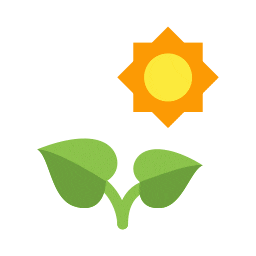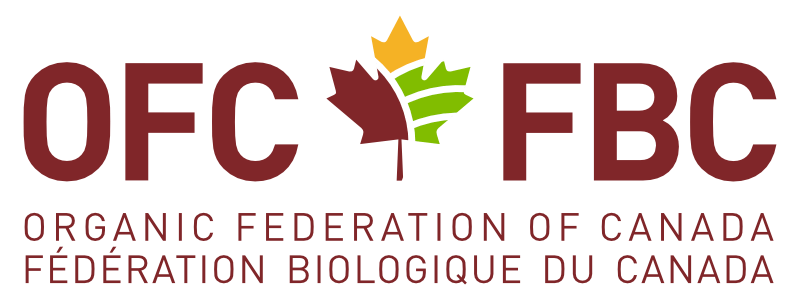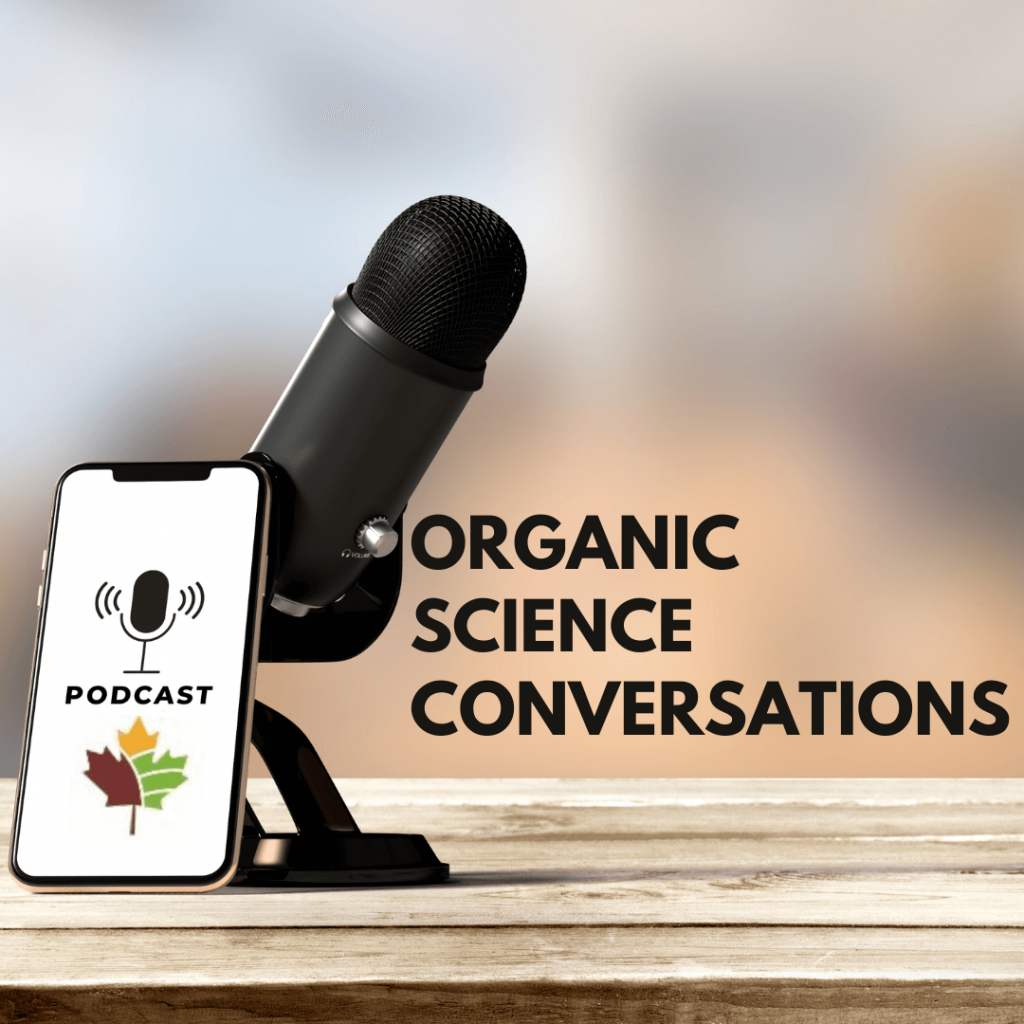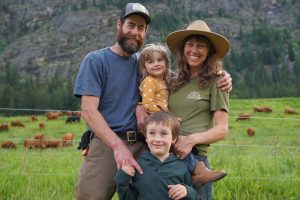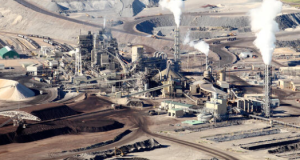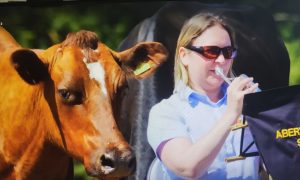Summary
Dr. Peter Tyedmers, from Dalhousie University, leads a valuable research activity to estimate the level of greenhouse gas emissions of Canadian organic field crop production systems. He invites all Canadian organic field crop farmers to join this research activity.
Download the interview with Dr Peter Tyedmers in PDF format.
Nathan Pelletier, from UBC, participates to this research activity. He was interviewed by Jordan Marr [17:00] in November 2020.
AH: Our climate is changing rapidly and governments around the world (including our own) are seeking ways to reduce greenhouse gas emissions. Agriculture is recognized as an important contributor to greenhouse gas emissions, but also as a potential sink.
Today, we are exploring how we might better understand the role of organic agriculture in greenhouse gas emissions. I am Andy Hammermeister and I’m the director of the Organic Agriculture Centre of Canada at Dalhousie University. I’m really happy to be speaking with my colleague, Dr. Peter Tyedmers, who is a professor in the School for Resource and Environmental Studies, also at Dalhousie University. Welcome Peter.
PT: Thanks, it is nice to join you on what I understand may be your first official podcast.
AH: It is my first podcast! I am really excited about it, and thanks for being my guinea pig. I’m looking forward to doing more of these.
So, Peter, what kind of research have you been doing at Dalhousie University?
PT: I’ve been here almost 20 years now. My work varies because of student interests or the opportunities that come along. But much of my work has revolved around food systems through a lens or motivation to understand their material and energy performance, questions like how much fossil fuel energy or electricity are we investing into these food systems? How do investments of material and energy translate into concerns we have around the environment, like eutrophication (the over-delivery of nutrients into ecosystems) or greenhouse gas emissions?
I didn’t start off exclusively as the scholar of food systems and their life cycle impacts, but over time, that is where much of my passion, interest and expertise has brought me.
AH: Organic sector leaders have been working hard to try to identify how the organic sector is impacting climate change and whether we have a net positive or net negative effect. We’re lacking data and one of our top priorities is to better understand how organic agriculture and its practices are influencing greenhouse gas emissions, or perhaps mitigating those emissions. This leads us to the research activity that you’re involved in. Can you tell us about the project?
PT: Sure! The project is part of the Organic Science Cluster 3. In conjunction with two colleagues, Dr. Goretty Dias at the University of Waterloo, and Dr. Nathan Pelletier at UBC in Okanagan, we’re working to understand the net greenhouse gas emissions associated with organic field crop production. We’re trying to gather as much data as we can about many field crops, like corn, soy, canola, wheat and potatoes, and their net greenhouse gas emissions under organic management practices.
AH: It seems like a huge job to access all the greenhouse gas emissions from a farm; do you start at a whole farm level or start looking at the production system associated with a single crop?
PT: We’re looking for two sets of insights from the farmers.
First, we want to meet with farmers to get an understanding about key inputs in their farming operations and the results of these. We want farmers to tell us about their rotation over the last three or four years, average rates of fertilizer inputs, fuel inputs, what energy they’re using to irrigate and other key operating inputs. We’re trying to get as much information about what was invested in inputs this past year, and going back in time to see what resulted from past inputs (such as how much corn, wheat or soy was produced in those years). We want to capture these details for the Life Cycle Analysis (LCA).
Secondly, we need to understand where the farm is located, the nature of the soil profile, the history of the soil… is it near its carbon sequestration capacity? Is it a highly carbon-depleted soil, and then likely to be sequestering more carbon? What is the rate of precipitation? Is it irrigated? … All these factors can influence the relative flux (the relative change) in carbon and nitrous oxide into the atmosphere or into the soil.
AH: I think it is really interesting. Trying to truly understand the total impact on greenhouse gas emissions or sequestering the greenhouse gases in the soil is very complex…right down from the energy cost of producing a bolt that goes into a piece of equipment to understanding how the soil is cycling nutrients and holding or releasing carbon dioxide or nitrous oxide to the atmosphere. Clearly you don’t have hundreds of students going out and measuring all of those things on the farms. You rely on different models to help you predict these impacts, is that correct?
PT: Exactly, if we were the very first people in the world who wanted to understand how organic farming operations in Canada contribute to greenhouse gas emissions, we would ask about everything (e.g., how many bolts? how frequently do they fall out?). But we know something from the fairly substantial history of very similar work that has been done at other places.
One of the first things we did was to review all of the published literature where life cycle assessment has been used to characterize the emissions of organic farms producing field crops. We pulled together about 20 studies, and then systematically went through them to identify the activities from those existing studies that have had the greatest impact on greenhouse gas emissions. We’re using experience from elsewhere to help focus the time of our students and, more importantly, the time the farmers have to help us on the questions that matter most. So we won’t be asking farmers about how many bolts because bolts don’t matter, as it turns out, based on prior research. We’re going to ask things like: What is the source of the nutrients? How much nutrients were deposited this year, last year, the year before? How much fuel was used? What is the nature of the soil?
AH: Using this example of nutrients, if you look at conventional agriculture, we often hear that 40% or even 50% of the energy cost of the farming system, at least of the production side, is related to producing or manufacturing fertilizers, especially nitrogen fertilizer, and, to a lesser extent, pesticides.
In organic agriculture, we might be looking at alternative sources such as pelletized poultry manure or compost. You would be evaluating the amount of pelletized poultry manure or compost being used and assessing potential greenhouse gas costs and emissions from those practices, is that correct?
PT: That’s right! They are nutrient dense, they have real value, and they support the productivity of a farm. Without them, yields would be far lower. These are critical inputs, but they also don’t appear through magic fairy dust. They are generated through real physical processes somewhere else in the world. They may be on a farm next door, or at a distance away. Their production resulted in greenhouse gas emissions somewhere. We will absolutely be interested in knowing how much of these nutrient carriers were used, and how we’re going to characterize the emissions associated with making poultry manure available.
The good news is, as I was describing earlier, we don’t have to necessarily go out and characterize poultry farms in Canada because, as it turns out, one of our collaborators on this project, Nathan Pelletier at UBC, has done a great deal of work on Canadian poultry farms; so, we already know quite a bit about the inputs and outputs and greenhouse gas emissions associated with poultry production in Canada, and one of the co-products of poultry production would be manure which could then find a fate on organic farms.
AH: That’s really cool that you don’t have to gather all of that data yourself. But you do need to understand is how many farmers are using, as an example, the poultry manure and how much they are putting on and where they might be getting it from. Clearly, this research depends on the data you collected from the farmers, which leads me to ask, how can farmers get involved in your project?
PT: The best thing is to contact the team. [The survey and contact information can be found at www.dal.ca/faculty/agriculture/oacc/en-home/organic-science-cluster/OSCIII/environment/activity-29.html.]
The clearest and most important role for farmers on our project is to be willing to work with one of the members of our team. In addition to the three other principal investigators I mentioned, we have four research assistants working for us this year, and three of those will continue on as graduate students with us over the next two years.
The farmers would work with us by sharing data about their inputs and outputs. The more detail, the better, but it’s okay if the farmers don’t have complete detailed records. In my experience, farmers and other resource producers, like fishermen, can ballpark pretty well. So even if farmers don’t know how many tonnes of pelletized manure was used, but they know how many truckloads came onto the farm, we can work with that. We will work with any level of detail that farmers are able to make available as long as they are willing to participate.
Summer is a busy time of year for farmers. We are happy to delay and work on the schedule that makes the most sense with farmers.
AH: Basically, you are looking for farmers who are involved in field crops, so you’re talking about grain, oilseeds…and potatoes as well?
PT: Absolutely! If you think of yourselves as potato producers and you grow them in rotation with other things or not, that’s great too.
AH: A lot of farmers are looking for practical research about soil fertility and controlling pests. How do you think your research will impact organic agriculture in Canada?
PT: The benefit of our project will be providing an understanding that is now absent in terms of how organic field crop practices in Canada contribute to climate change. What is the scale of that contribution? Does it vary tremendously with region, with years of experience or with how long the soil has been in organic management?
We suspect that it may vary with these sorts of phenomena, certainly regionally because of differences of soil type and precipitation. But the benefit, I believe, comes from being better able to be part of the conversation in Canada about what the organic sector represents in terms of where it is now on this globally important issue [of climate change].
If we have enough understanding about the diversity of organic management practices in Canada, it will ideally point to those practices that are less emitting than others. That could highlight strategies that might allow other farmers to migrate in those similar directions.
You can’t change where your farm is located or the broad composition of your soil (except on a more incremental basis through efforts to improve soil fertility). But there are a lot of management practices that are absolutely within the domain of control of the producers. If they are relatively neutral from a revenue perspective [i.e., no net cost], we could point out some really important opportunities for emission reductions.
AH: Yes, I think you have highlighted it nicely. We need to first understand these systems and their contribution to greenhouse gas emissions and as a sink before we can start adopting new practices. What we are chronically lacking in our sector in Canada is data that help inform our decision-making and recommendations to improve practices.
I think that this research is really, really important and will have a big impact on the sector in terms of guiding us down a pathway to greater sustainability, which is what organics is all about. I look forward to talking with you again when we have some more results coming in.
PT: Andy, you’re very welcome. It was a great pleasure and I hope this was a good kickoff to your new podcast series.
Definitions:
Carbon sequestration – the process of long-term removal of carbon dioxide from the atmosphere and storage in plants, animals, oceans or geological formations. In agricultural systems, carbon would be stored in large molecules of organic materials (such as plants) that are not easily decomposed. Agricultural practices that increase soil organic matter help to sequester carbon, but this carbon may also be released through practices that disturb the soil.
Carbon flux – the balance and flow of carbon between the atmosphere, living organisms and soil or water. In agricultural systems, the soil is a major “pool” of carbon which can be influenced by management practices that add or destroy soil organic matter.
Greenhouse gases – the gases in the atmosphere that absorb and reflect infrared radiation (i.e., heat) back to the earth’s surface. The primary greenhouse gasses associated with agriculture are carbon dioxide (CO2), methane (CH4) and nitrous oxide (N2O).
Life Cycle Assessment (LCA) – a method of assessing the environmental impacts associated with all stages of the life cycle of a product. In this research activity, greenhouse gas emissions are being studied from the energy used to manufacture equipment through to the fuel used to harvest a crop.
Organic Science Cluster – the national science program led collaboratively by the Organic Federation of Canada and the Organic Agriculture Centre of Canada at Dalhousie University with the support of the AgriScience Program under Agriculture and Agri-Food Canada’s Canadian Agricultural Partnership (an investment by federal, provincial, and territorial governments) and more than 70 partners from the agricultural community.
Soil flux – a flux refers to the flow of a substance between two media. In this interview, we are talking about the flow of greenhouse gases between the soil physical matrix (pores, minerals, air space and water), the living organisms in the soil, and the atmosphere. Scientists will measure the release of carbon dioxide from the soil to the atmosphere when, for example, soil organisms decompose dead plant matter.
